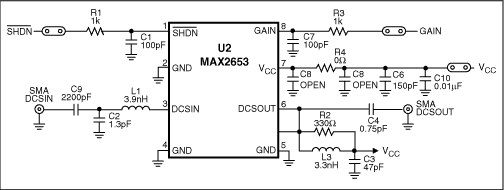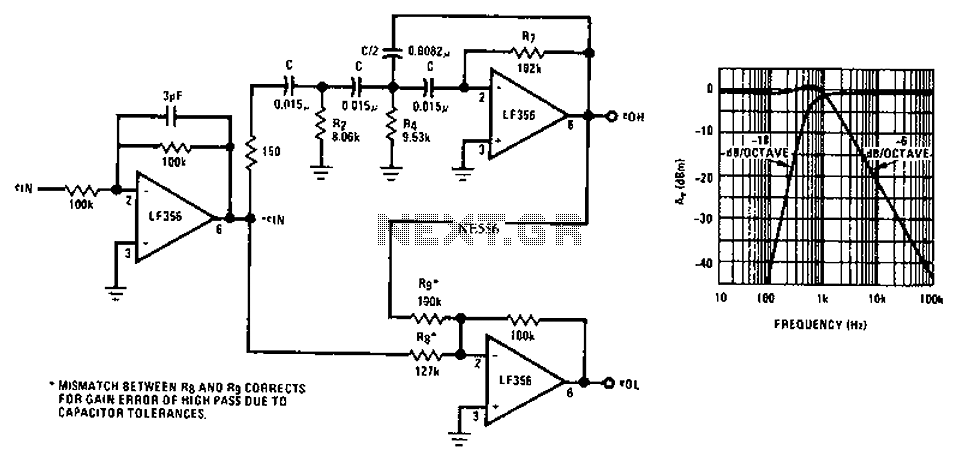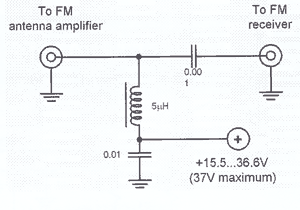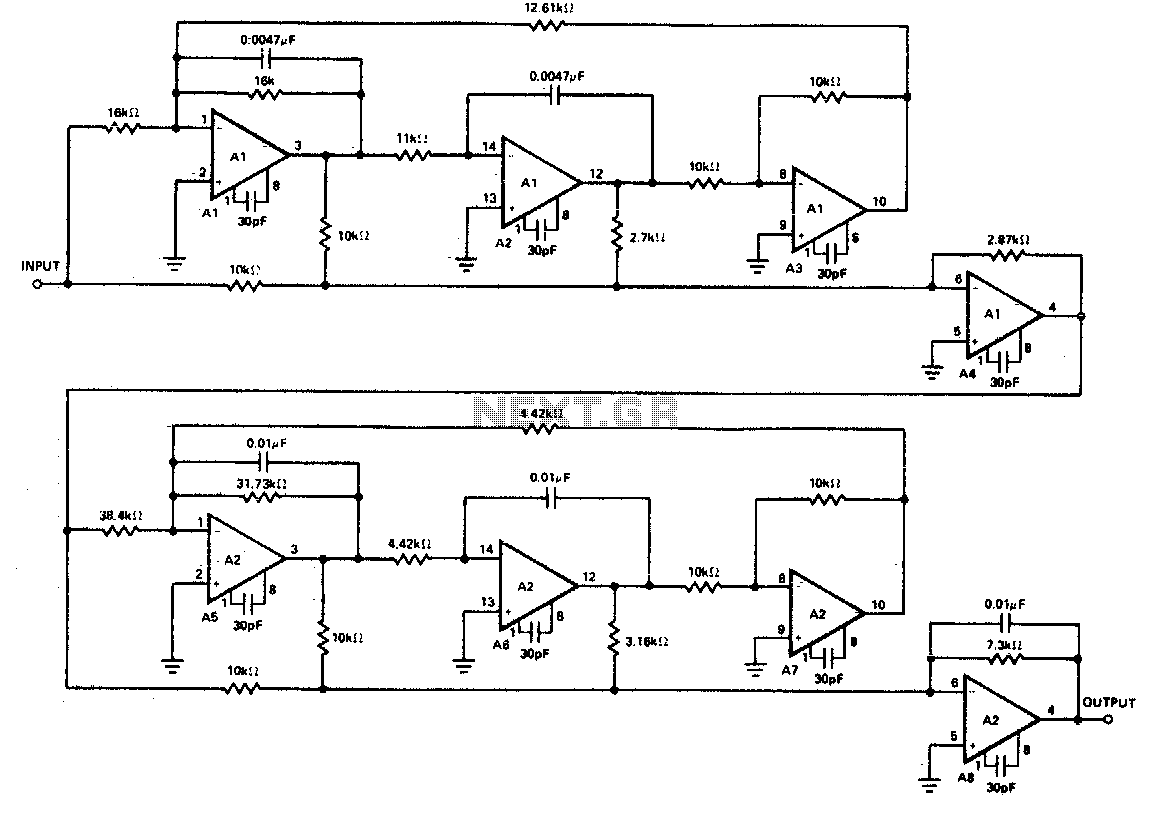
Active Antenna With Gain
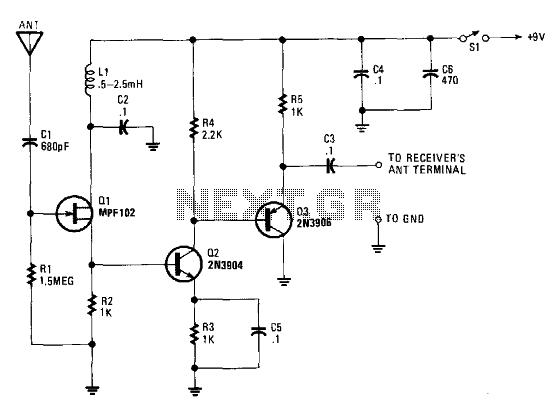
The signal booster, constructed using several transistors and supporting components, provides an RF gain ranging from approximately 12 to 18 dB across a frequency range of about 100 kHz to over 30 MHz. The RF signal is directly coupled from the source terminal of Q1 to the base of Q2, which functions as a voltage amplifier. The output from Q2 is then directly coupled to the base of Q3, which operates as an emitter-follower amplifier. Transistor Q3 serves to match and isolate the gain stage from the RF input circuitry of the receiver. An inductor (L1) is employed to prevent power source noise from reaching the FET (Q1), with an RF choke value ranging from 0.5 to 2.5 mH being suitable. The resistor R2 is used to set the bias for Q2 at approximately 2 V; if the voltage falls below 2 V, the value of R2 should be increased to 1.5 kΩ. To extend the frequency response below 100 kHz, the capacitor C1 should be increased to 0.002 µF. The antenna utilized is a short pull-up type, with a length between 42 inches and 86 inches.
The schematic for the described signal booster includes three primary transistors: Q1, Q2, and Q3. Q1 is typically a field-effect transistor (FET) that acts as the initial RF signal amplifier. The direct coupling of the source terminal of Q1 to the base of Q2 ensures that the amplified signal from Q1 is efficiently transferred to the voltage amplifier stage, Q2. This configuration is critical for maintaining signal integrity and minimizing losses.
Transistor Q2 is configured to amplify the RF signal further, and its output is then directly coupled to Q3. The emitter-follower configuration of Q3 allows for a high input impedance and a low output impedance, which is essential for effectively driving the input of the subsequent circuitry in the receiver. This isolation provided by Q3 prevents loading effects that could otherwise degrade the performance of the preceding amplification stages.
The inductor L1 plays a vital role in filtering out any noise from the power supply, ensuring that only the desired RF signal is amplified. The choice of an RF choke between 0.5 to 2.5 mH is optimal for this application, as it balances the need for effective filtering while maintaining bandwidth.
Resistor R2 is crucial for setting the bias point of Q2. A bias voltage of approximately 2 V is necessary for optimal operation of Q2. Should the bias voltage drop below this level, increasing R2 to 1.5 kΩ will help restore the proper biasing conditions. This adjustment is important for maintaining the linearity and efficiency of the amplifier.
Capacitor C1 is used to adjust the lower frequency response of the circuit. Increasing its value to 0.002 µF allows the circuit to effectively amplify signals below 100 kHz, thus expanding its operational frequency range.
The antenna design, specified as a short pull-up type with a length between 42 inches and 86 inches, is suitable for this application as it balances size and performance, allowing for effective signal reception across the specified frequency range.
Overall, this signal booster design exemplifies a straightforward yet effective approach to RF amplification, utilizing fundamental electronic components to achieve desirable performance metrics in a compact form. The signal booster, built around a few transistors and support components, offers an RF gain of about 12 to 18 dB (from about 100 kHz to over 30 MHz). The RF signal is direct-coupled from Ql"s source terminal to the base of Q2, which is configured as a voltage amplifier. The output of Q2 is then direct-coupled to the base of Q3 (configured as an emitter-follower amplifier).
Transistor Q3 is used to match and isolate the gain stage from the receiver"s RF-input circuitry. Inductor LI is used to keep any power source noise from reaching the FET (Ql) and any value of RF choke from 0.5 to 2.5 mH will do. The value of R2 sets the Q2 bias at about 2 V. If the voltage is less than 2 V, increase the value of R2 to 1.5 KOhmhm. To go below 100 kHz (to the bottom of the RF spectrum), increase the value of CI to 0.002uf. The antenna is a short pull-up type (42" to 86" long). 🔗 External reference
The schematic for the described signal booster includes three primary transistors: Q1, Q2, and Q3. Q1 is typically a field-effect transistor (FET) that acts as the initial RF signal amplifier. The direct coupling of the source terminal of Q1 to the base of Q2 ensures that the amplified signal from Q1 is efficiently transferred to the voltage amplifier stage, Q2. This configuration is critical for maintaining signal integrity and minimizing losses.
Transistor Q2 is configured to amplify the RF signal further, and its output is then directly coupled to Q3. The emitter-follower configuration of Q3 allows for a high input impedance and a low output impedance, which is essential for effectively driving the input of the subsequent circuitry in the receiver. This isolation provided by Q3 prevents loading effects that could otherwise degrade the performance of the preceding amplification stages.
The inductor L1 plays a vital role in filtering out any noise from the power supply, ensuring that only the desired RF signal is amplified. The choice of an RF choke between 0.5 to 2.5 mH is optimal for this application, as it balances the need for effective filtering while maintaining bandwidth.
Resistor R2 is crucial for setting the bias point of Q2. A bias voltage of approximately 2 V is necessary for optimal operation of Q2. Should the bias voltage drop below this level, increasing R2 to 1.5 kΩ will help restore the proper biasing conditions. This adjustment is important for maintaining the linearity and efficiency of the amplifier.
Capacitor C1 is used to adjust the lower frequency response of the circuit. Increasing its value to 0.002 µF allows the circuit to effectively amplify signals below 100 kHz, thus expanding its operational frequency range.
The antenna design, specified as a short pull-up type with a length between 42 inches and 86 inches, is suitable for this application as it balances size and performance, allowing for effective signal reception across the specified frequency range.
Overall, this signal booster design exemplifies a straightforward yet effective approach to RF amplification, utilizing fundamental electronic components to achieve desirable performance metrics in a compact form. The signal booster, built around a few transistors and support components, offers an RF gain of about 12 to 18 dB (from about 100 kHz to over 30 MHz). The RF signal is direct-coupled from Ql"s source terminal to the base of Q2, which is configured as a voltage amplifier. The output of Q2 is then direct-coupled to the base of Q3 (configured as an emitter-follower amplifier).
Transistor Q3 is used to match and isolate the gain stage from the receiver"s RF-input circuitry. Inductor LI is used to keep any power source noise from reaching the FET (Ql) and any value of RF choke from 0.5 to 2.5 mH will do. The value of R2 sets the Q2 bias at about 2 V. If the voltage is less than 2 V, increase the value of R2 to 1.5 KOhmhm. To go below 100 kHz (to the bottom of the RF spectrum), increase the value of CI to 0.002uf. The antenna is a short pull-up type (42" to 86" long). 🔗 External reference

